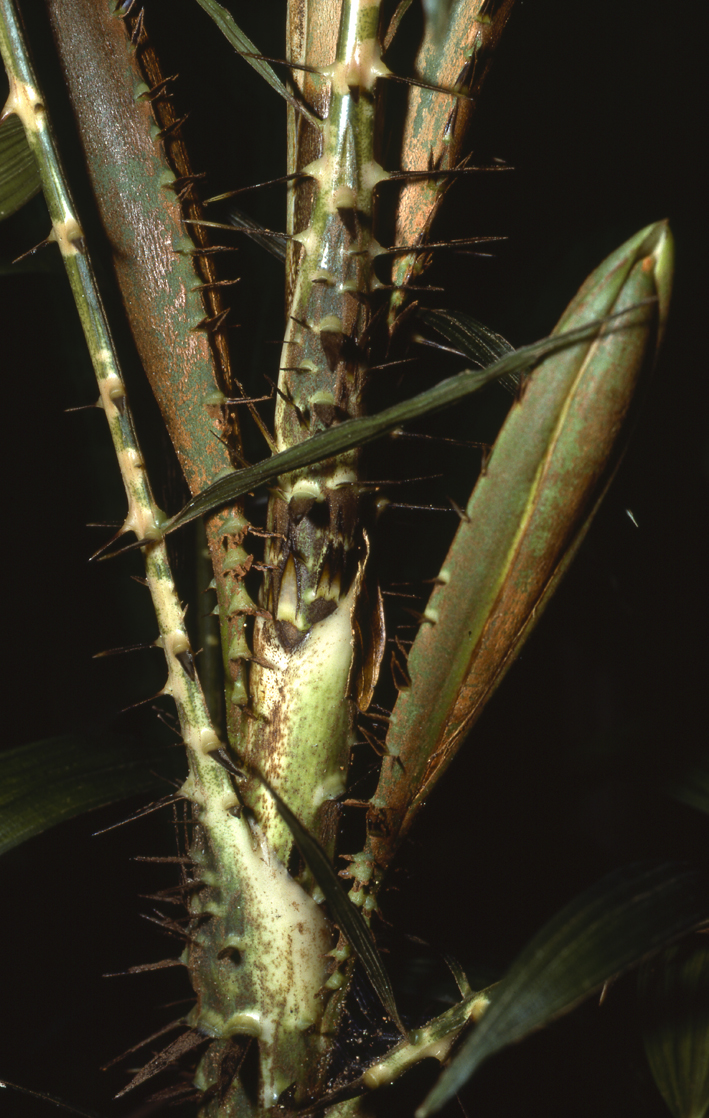- Acanthophoenix
- Acrocomia
- Actinokentia
- Actinorhytis
- Adonidia
- Aiphanes
- Allagoptera
- Ammandra
- Aphandra
- Archontophoenix
- Areca
- Arenga
- Asterogyne
- Astrocaryum
- Attalea
- Bactris
- Balaka
- Barcella
- Basselinia
- Beccariophoenix
- Bismarckia
- Borassodendron
- Borassus
- Brassiophoenix
- Burretiokentia
- Butia
- Calamus
- Calyptrocalyx
- Calyptrogyne
- Calyptronoma
- Carpentaria
- Carpoxylon
- Caryota
- Ceratolobus
- Ceroxylon
- Chamaedorea
- Chamaerops
- Chambeyronia
- Chelyocarpus
- Chuniophoenix
- Clinosperma
- Coccothrinax
- Cocos
- Corypha
- Cryosophila
- Cyphokentia
- Cyphophoenix
- Cyphosperma
- Deckenia
- Desmoncus
- Dictyocaryum
- Drymophloeus
- Dypsis
- Elaeis
- Eleiodoxa
- Eremospatha
- Eugeissona
- Euterpe
- Gaussia
- Geonoma
- Guihaia
- Hedyscepe
- Hemithrinax
- Howea
- Hyophorbe
- Hyospathe
- Hyphaene
- Iriartea
- Iriartella
- Itaya
- Jailoloa
- Johannesteijsmannia
- Juania
- Jubaea
- Jubaeopsis
- Kentiopsis
- Kerriodoxa
- Korthalsia
- Laccospadix
- Laccosperma
- Lanonia
- Latania
- Lemurophoenix
- Leopoldinia
- Lepidocaryum
- Lepidorrhachis
- Leucothrinax
- Licuala
- Linospadix
- Livistona
- Lodoicea
- Lytocaryum
- Manicaria
- Manjekia
- Marojejya
- Masoala
- Mauritia
- Mauritiella
- Maxburretia
- Medemia
- Metroxylon
- Myrialepis
- Nannorrhops
- Nenga
- Neonicholsonia
- Neoveitchia
- Nephrosperma
- Normanbya
- Nypa
- Oenocarpus
- Oncocalamus
- Oncosperma
- Orania
- Oraniopsis
- Parajubaea
- Pelagodoxa
- Phoenicophorium
- Phoenix
- Pholidocarpus
- Pholidostachys
- Physokentia
- Phytelephas
- Pigafetta
- Pinanga
- Plectocomia
- Plectocomiopsis
- Podococcus
- Pogonotium
- Ponapea
- Prestoea
- Pseudophoenix
- Ptychococcus
- Ptychosperma
- Raphia
- Ravenea
- Reinhardtia
- Retispatha
- Rhapidophyllum
- Rhapis
- Rhopalostylis
- Roscheria
- Roystonea
- Sabal
- Sabinaria
- Salacca
- Saribus
- Satakentia
- Satranala
- Schippia
- Sclerosperma
- Socratea
- Solfia
- Sommieria
- Syagrus
- Synechanthus
- Tahina
- Tectiphiala
- Thrinax
- Trachycarpus
- Trithrinax
- Veitchia
- Verschaffeltia
- Voanioala
- Wallaceodoxa
- Wallichia
- Welfia
- Wendlandiella
- Wettinia
- Wodyetia
- Zombia
- x Jubautia splendens
- ?? Acoelorrhaphe
- ?? Bentinckia
- ?? Brahea
- ?? Clinostigma
- ?? Colpothrinax
- ?? Copernicia
- ?? Cyrtostachys
- ?? Dictyosperma
- ?? Dransfieldia
- ?? Heterospathe
- ?? Hydriastele
- ?? Iguanura
- ?? Incertae sedis & excluded names
- ?? Loxococcus
- ?? Micronoma
- ?? Paripon
- ?? Pritchardia
- ?? Rhopaloblaste
- ?? Serenoa
- ?? Washingtonia

Distribution
Known from two collections in Brunei. Elsewhere in Sarawak. Endemic to Borneo. (Dransfield, J. 1997: The Rattans of Brunei Darussalam)A
Discussion
- D. maculata appears to be confined to kerangas forest in the lowlands; it may be distinguished from D. didymophylla by the solitary habit, very short petiole, regular leaflets with very thick texture and abundant transverse veinlets, the basalmost leaflets being much shorter than the rest, and the peculiar blotches along the rachis. (Dransfield, J. 1997: The Rattans of Brunei Darussalam)A
Etymology
- Blotched (Dransfield, J. 1997: The Rattans of Brunei Darussalam)A
Uses
- Not known with certainty but this must be one of the richest producers of dragon’s blood. (Dransfield, J. 1997: The Rattans of Brunei Darussalam)A
Description
- Slender to moderate solitary rattan with stems rarely longer than 5 m, usually only 2 m; stem without sheaths to c. 11 mm diam., with sheaths to 20 mm diam., internodes c. 8 cm long, sometimes much less. Sheaths bright green when fresh, bearing scattered, straight black spines to 15 mm with yellowish bases and abundant deciduous scales; knee conspicuous, the sheath pale creamcoloured above the knee; ocrea absent. Rosette leaves ecirrate, to c. 1.5 m long, long-persisting, with 8-10 regularly arranged leaflets on each side of the rachis, petiole and rachis conspicuously yellow blotched. Leaves on climbing stems cirrate, to 2 m, but usually c. 75 cm, petiole very short, 2-5 cm only, cirrus to 75 cm; rachis sparsely armed, bright green, conspicuously blotched with yellow; leaflets 8-10 on each side, regularly arranged, broad, hooded and abruptly narrowed at the tip, very thick in texture, the largest to c. 25 × 6 cm, the basalmost 1-2 pairs very much smaller and narrower; transverse veinlets conspicuous. Inflorescences short, rarely more than 20 cm, rather congested; peduncle very spiny; prophyll c. 14 × 4 cm, ± woody; partial inflorescences c. 5; male rachilla c. 15 × 1.5 mm, female c. 25 × 3 mm, both densely covered in brown hairs. Mature fruit rounded, c. 20 × 16 mm, somewhat beaked, covered in 15 vertical rows of brown scales very heavily encrusted in dragon’s blood. Seed c. 14 × 10 mm; endosperm deeply ruminate. Seedling leaf not known. (Fig. 12, Pl. 4C). (Dransfield, J. 1997: The Rattans of Brunei Darussalam)A
Materials Examined
- BEL: Melilas, Bt.Batu Patam, Dransfield J. 6557. TUT: Rambai, Bt.Bahak, Coode 6987. (Dransfield, J. 1997: The Rattans of Brunei Darussalam)A
- Log in to post comments

